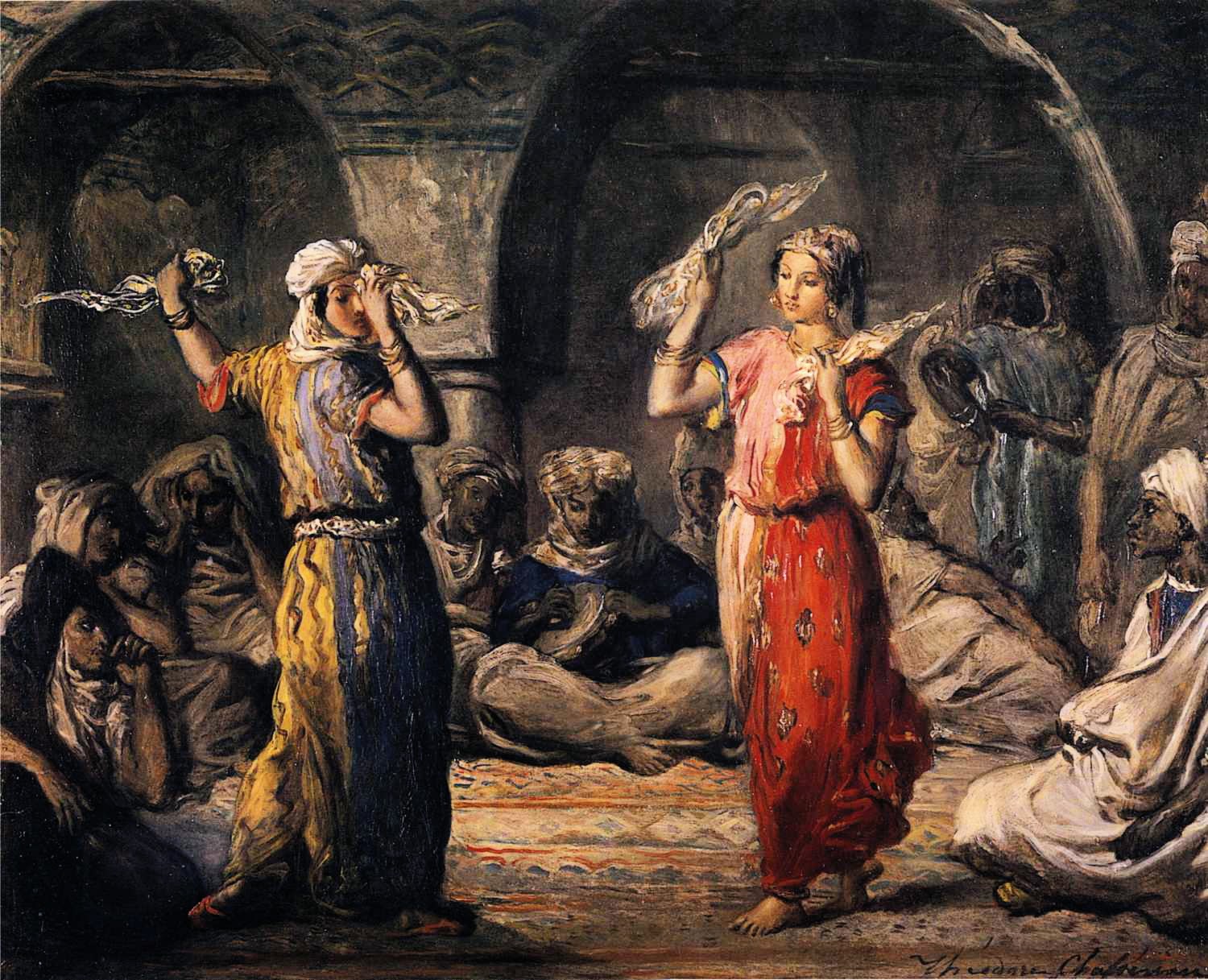Charles Giraud: Taking of Fort Fautahua in Tahiti, December 17, 1846
Paintings from 19th century France, from Neoclassic to Academic to Barbizon. Impressionism is not covered here.
Friday, October 31, 2014
Thursday, October 30, 2014
Marie Eléonore Godefroy
Marie Eléonore Godefroy: Anne-Louise-Germaine Necker,
Baroness de Staël-Holstein, known as Madame de Staël
Madame de Staël was a prominent, and quite accomplished, lady. Among other things, she was an enemy of Napoleon, and managed to survive. She traveled widely, was an author, befriended the Duke of Wellington, and involved herself in politics.
Wednesday, October 29, 2014
Monday, October 27, 2014
Carle Vernet
Carle Vernet: His Majesty Giving Orders to
His Marshals, the Morning of the Battle of Austerlitz
Vernet has been featured here before; he seems to have made a career out of painting Napoleon.
Friday, October 24, 2014
Thursday, October 23, 2014
Alfred de Dreux
M de Dreux has been featured before.
A Lady Sitting with Two Greyhounds
A Young Horsewoman with a Yellow Tucker
Innocence Between Two Thieves
Wednesday, October 22, 2014
Alexandre Antigna
We have reached mid-century! I will spend a couple of weeks posting some undated paintings before diving into the second-half of the century. These are by Alexandre Antigna, who has been featured once here before.
Death of a Pauper
Jeune Fille Souriant
The Forced Halt
Tuesday, October 21, 2014
Monday, October 20, 2014
The Stonebreakers (1849-50)
Gustave Courbet: The Stonebreakers
The Stone Breakers (Les Casseurs de Pierres) was a work of social realism, depicting two peasants, a young man and an old man, breaking rocks. The painting was first exhibited at the Paris Salon of 1850. It was destroyed during World War II, along with 154 other pictures, when a transport vehicle moving the pictures to the castle of Königstein, near Dresden, was bombed by Allied forces in February 1945. [Wikipedia]
More about this painting:
Sunday, October 19, 2014
Saturday, October 18, 2014
Portrait of the Comtesse Charles d'Agoult (1849)
Jean-August-Dominique Ingres: Portrait of the Comtesse Charles d'Agoult,
born Marie de Flavigny, and Her Daughter Claire d'Agoult
Friday, October 17, 2014
Thursday, October 16, 2014
Wednesday, October 15, 2014
Tuesday, October 14, 2014
Monday, October 13, 2014
Sunday, October 12, 2014
Saturday, October 11, 2014
Friday, October 10, 2014
The Faïence Restorer (1848)
Paul-Narcisse Salières: The Faïence Restorer
Salières, who studied with the academic painter Paul Delaroche, made his exhibition debut at the Paris Salon of 1847 and showed this painting there the following year. This is ostensibly an unassuming scene of everyday life in the artist's native Languedoc region. But for many mid-nineteenth century viewers it would have evoked La cruche cassée (The Broken Pitcher), the iconic painting of lost innocence by Jean-Baptiste Greuze (1725–1805), then as now in the Musée du Louvre, Paris. [Metropolitan Museum]
Thursday, October 9, 2014
Venus Anadyomene (1848)
Wednesday, October 8, 2014
Tuesday, October 7, 2014
Monday, October 6, 2014
Assault of the Monastery of Santa Engracia (1848)
Louis-Francois Lejeune: Assault of the Monastery of Santa Engracia
This episode took place during the second siege of Zaragoza during the Peninsular War.
Sunday, October 5, 2014
Anacreon, Bacchus and Cupid (1848)
Jean-Léon Gérôme: Anacreon, Bacchus and Cupid
Gérôme would gain his greatest fame with his many Orientalist paintings (particularly those of harem scenes). But his early work was in the "Neo-Grec" school, including this example.
Saturday, October 4, 2014
Louis-Philippe and the Royal Family, visiting the Galeries Historiques (1848)
Auguste Vinchon: Louis-Philippe and the Royal Family, visiting the Galeries Historiques in the Musée de Versailles, stopping in front of the statue of Jeanne d'Arc
Friday, October 3, 2014
The Birth of Pindar (1848)
Henri-Pierre Picou: The Birth of Pindar
Picou focused his work on mythological, historical, and allegorical scenes. He was an academic painter who studied with Delaroche and Gleyre. Together with several others, including Gérôme, he founded the "Neo-Grec" school, an extension of Neoclassicism.
Pindar (522-443 BC) was an ancient Greek lyric poet.
Thursday, October 2, 2014
Wednesday, October 1, 2014
Baronne de Rothschild (1848)
Jean-August-Dominique Ingres: Baronne de Rothschild
The sitter, Betty de Rothschild (1805–1886) had married banker James Mayer de Rothschild and was one of the wealthiest women in northern Europe, and one of the foremost Parisian patrons of the arts. Her beauty and elegance were widely known and celebrated, and inspired Heinrich Heine's poem The Angel. For her portrait, which is painted in oil on canvas, Ingres sought to infuse symbols of her material wealth with the dignity, grace and beauty of Renaissance art, especially that of Raphael, while at the same time adhering to the command of line as practiced by Jan van Eyck. It is this combination which, according to art historians, places Ingres so far apart from his early modernist contemporaries. Betty de Rothschild's portrait is regarded as one of Ingres' most accomplished works, and has been described as "perhaps the most sumptuous yet approachable image of mid-nineteenth-century opulence." [Wikipedia]
Subscribe to:
Posts (Atom)
































